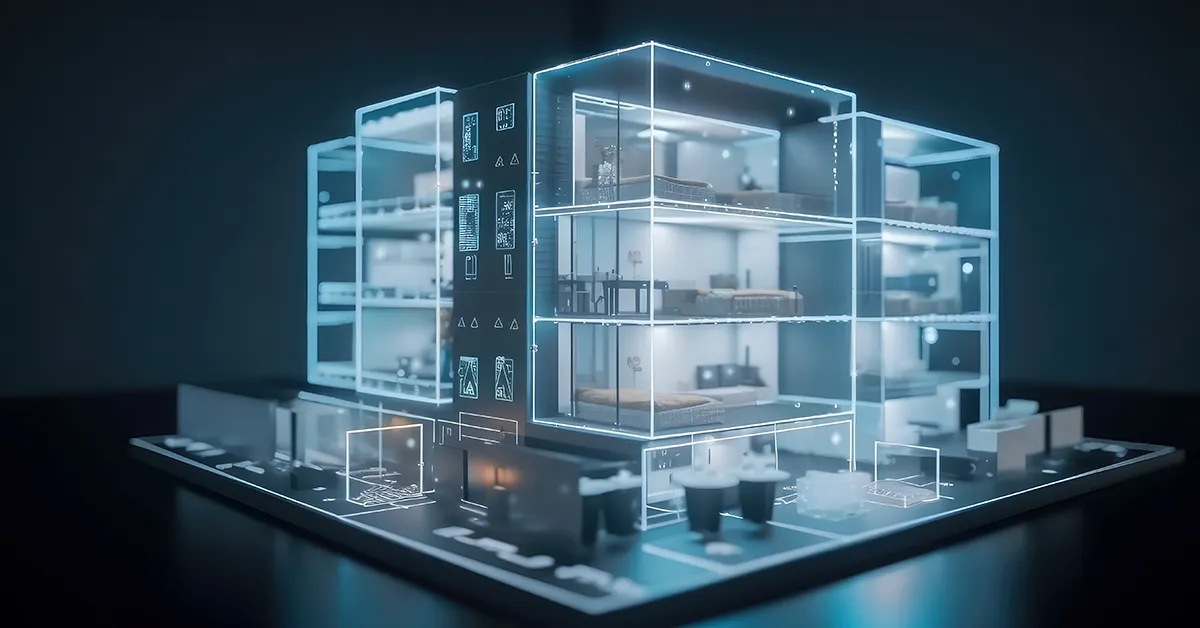

A Fiber Access Terminal (FAT) typically consists of key components such as fiber optic connectors, splice trays, splitter modules, power supply units, and management interfaces. These components work together to facilitate the distribution of fiber optic signals to customer premises in a network.
A Fiber Access Terminal (FAT) acts as a central point where fiber optic cables from the service provider's network are connected to individual customer premises. By housing the necessary equipment and components, the FAT enables the seamless transmission of high-speed internet services to end-users, ensuring reliable connectivity and efficient data transfer.
Multi-dwelling unit (MDU) residents no longer just expect a roof over their heads; they demand a reliable connected existence. Connectivity is key. The internet isnot only an indispensable utility, but one that MDU residents expect property owners to provide. This post explores why a reliable internet service is crucial for property management and the potential consequences of dead spots, slow speeds, and internet downtime.

Posted by on 2024-02-07
Greetings from the technical forefront of Dojo Networks, your community’s internet service provider. In this article, we embark on a technical journey to explore the intricacies of WiFi connectivity within your apartment complex. As WiFi ninjas, we'll delve into the advanced mechanisms and protocols underpinning our managed network, detail the disruptive influence caused by personal routers, and explain why a unified approach from all residents is essential for ensuring optimal internet performance.

Posted by on 2024-01-18
It’s in our DNA. It made us who we are. DojoNetworks got its start more than 20 years ago as an internet company selling retail direct to MDU residents. We sold against the big carriers… one customer at a time. To win over–and retain–customers who assumed the cable company was their only option, we had to provide better value and better service. No other service provider in our industry, no one, has this amount of direct-to-customer experience or success. The carriers were used to being the only game in town, and the other MSPs all started with bulk, knowing they had a captive audience. A few MSPs are just now starting to offer opt-in service and have a year or two of experience.

Posted by on 2023-10-30
Smart apartment buildings, equipped with cutting-edge technology and automation systems, are becoming the new standard in property management. In this comprehensive guide, we will explore the concept of smart apartment buildings, the benefits they offer to owners and tenants, how to build or upgrade to one, the key features and technologies involved, and the steps to plan and implement a smart apartment building strategy.

Posted by on 2023-09-25
For students and other multi-tenant property residents, high-speed internet service is no longer a luxury. It’s a necessity. Internet access is commonly referred to as the “fourth utility” and is viewed by many to be THE MOST IMPORTANT UTILITY™.

Posted by on 2023-07-20
In a fiber-to-the-home (FTTH) network, a Fiber Access Terminal (FAT) plays a crucial role in bridging the gap between the service provider's infrastructure and the customer's residence. By serving as the interface point, the FAT allows for the deployment of fiber optic connections directly to homes, enabling households to access high-speed internet services with minimal latency and maximum bandwidth.

A Fiber Access Terminal (FAT) contributes significantly to the distribution of high-speed internet services by efficiently managing and routing fiber optic signals to customer premises. With the ability to support multiple connections and provide reliable connectivity, FATs play a key role in ensuring that end-users receive consistent and fast internet access, enhancing the overall user experience.
There are different types of Fiber Access Terminals (FATs) available in the market, including wall-mounted FATs, pole-mounted FATs, indoor FATs, and outdoor FATs. Each type is designed to cater to specific installation requirements and environmental conditions, offering flexibility and scalability in deploying fiber optic connections to various locations.
MDU Internet Infrastructure Used Currently For Commercial Applications in 2024

A Fiber Access Terminal (FAT) helps in managing and organizing fiber optic connections in a network by providing a centralized point for connecting, splicing, and distributing fiber optic cables. With features such as splice trays and management interfaces, FATs enable technicians to easily access and maintain the network, ensuring efficient operation and troubleshooting when needed.
The advantages of using Fiber Access Terminals (FATs) in fiber optic networks compared to traditional copper-based systems include higher bandwidth capacity, lower signal loss, reduced electromagnetic interference, and longer transmission distances. FATs also offer greater scalability, flexibility, and reliability, making them ideal for delivering high-speed internet services to a wide range of customers efficiently and cost-effectively.

Fiber-to-the-home (FTTH) and fiber-to-the-building (FTTB) are two different internet infrastructure technologies commonly used in multi-dwelling units (MDUs). The key difference between FTTH and FTTB lies in the final connection point of the fiber optic cable. In FTTH, the fiber optic cable extends all the way to individual residential units, providing direct access to high-speed internet services. On the other hand, FTTB only extends the fiber optic cable to the building itself, with the final connection made through existing copper or coaxial cables within the building. This means that FTTH offers a more direct and efficient connection for residents, while FTTB may result in slightly slower speeds due to the use of existing infrastructure within the building. Additionally, FTTH typically requires more extensive installation and may be more costly to implement compared to FTTB.
Network monitoring tools play a crucial role in managing MDU internet connectivity by providing real-time visibility into network performance, bandwidth usage, and security threats. These tools help network administrators identify and troubleshoot issues such as network congestion, latency, and downtime, ensuring a seamless internet experience for residents in multi-dwelling units. By monitoring key metrics like packet loss, throughput, and latency, administrators can proactively address potential issues before they impact user experience. Additionally, network monitoring tools can help optimize network resources, allocate bandwidth efficiently, and enforce security policies to protect against cyber threats. Overall, these tools enable administrators to maintain a reliable and high-performing internet connection for MDU residents.
Service level agreements (SLAs) in MDU internet contracts are typically negotiated between the internet service provider (ISP) and the property management company or homeowners' association representing the multi-dwelling unit (MDU). These negotiations often involve discussions around uptime guarantees, response times for technical support, and penalties for not meeting agreed-upon service levels. Once the SLA is agreed upon, it is enforced through regular monitoring of performance metrics by both parties. If the ISP fails to meet the SLA requirements, the contract may include provisions for compensation or termination of the agreement. Additionally, some MDU internet contracts may include clauses for dispute resolution in case of disagreements over SLA enforcement. Overall, negotiating and enforcing SLAs in MDU internet contracts is crucial for ensuring reliable and high-quality internet service for residents.
Remote PHY architecture offers several advantages in MDU broadband deployments. By moving the physical layer functions closer to the end-user, operators can improve signal quality, reduce latency, and increase bandwidth capacity. This architecture also allows for easier scalability and flexibility in network upgrades, as well as more efficient use of existing infrastructure. Additionally, remote PHY enables operators to provide advanced services such as high-definition video streaming, low-latency gaming, and IoT connectivity to residents in MDUs. Overall, remote PHY architecture enhances the overall user experience and helps operators meet the growing demand for high-speed internet in multi-dwelling units.